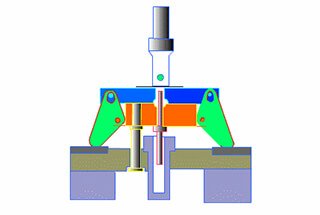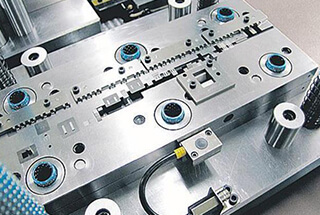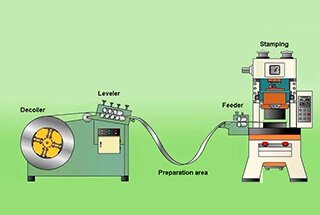The mold is a crucial component in industrial production and serves as a foundation for the mold industry.
Internationally, the mold is recognized as a paramount element in metal processing and is considered a symbol of a country’s economic and technological advancement.
The importance of developing the mold industry is recognized globally.
However, some challenges persist in the mold industry, such as a shortage of skilled professionals, outdated technology, lengthy manufacturing cycles, subpar quality, high costs, and limited mold lifespan.
Related reading: How to Improve Mold Quality?
According to statistics and analysis conducted by relevant parties, the selection of materials and heat treatment of dies account for 50% of the factors that contribute to die failure. This highlights the significance of proper material selection and heat treatment in ensuring the longevity and effectiveness of dies.
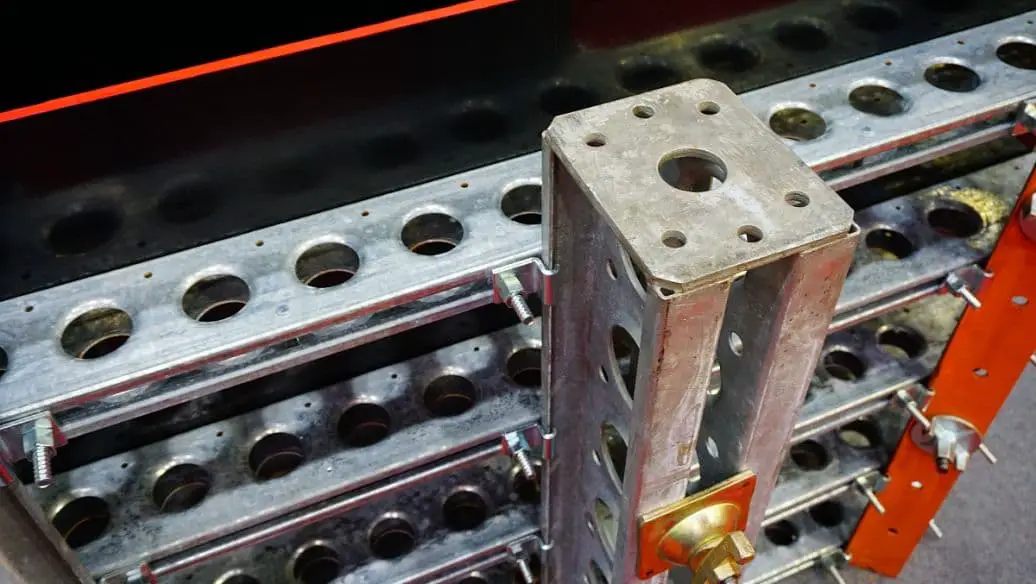
1. Comparison of die life at home and abroad
According to the 11th issue of China Die Information report in 2001, Table 1 compares the lifespan of dies in China and abroad.
Despite 20 years of progress, the overall level of molds in China has remained relatively unchanged compared to that of foreign countries.
However, a significant gap still exists between China and foreign countries when it comes to producing large, precise, complex, and long-lasting molds.
Table 1 Comparison of die life at home and abroad
| Mold type | Molded parts, materials and dimensions | Mold material | Total life of die (punching times, parts) | |
| Advanced world standard | Domestic level | |||
| Blanking die | Brass, low carbon steel plate;Flat blanking parts;Material thickness ≤ 1mm, size 40mm × 40mm, φ 45mm | Carbon tool steel T8, T10 for concave and convex die | 4 million~7 million | <1 million |
| Alloy tool steel G12, G12MoV | 8 million to 10 million | 3 million~5 million | ||
| Use cemented carbide YG15, YG20 | 600 million to 3 billion | <50 million | ||
| Silicon steel plate for motor rotor and stator, material thickness ≤ 0.5mm, size < 200mm | Hard alloy (multi station continuous blanking die) | US Linina: 300 million | 38 million~50 million | |
| Kuroda Seiko: 270 million | ||||
| Statomat, Switzerland: 80 million | ||||
| Stellrem, UK: 100 million | ||||
| Fine blanking die | Mild steel with wC ≤ 0.2%;Pull rod, cam, base plate and other fine blanking parts with material thickness less than 3mm or 3-6mm | Alloy tool steel: Cr12MoV | 500000~1000000 | <150000 |
| Alloy tool steel: Cr12MoVHigh speed tool steel: W6Mo5G4V2 | 300000~600000 | 100000~120000 | ||
| Die-casting die | Aluminum alloy parts | Cr-Ni steel, 3Cr2W8 | > 450000 | <200000 |
| Forging die | Steel, crankshaft | Cr Ni steel, 5CrNiMo | 14000~20000 | 5000~7000 |
| Injection Mold | ABS, medium | alloy tool steel | > 500000 | 200000~300000 |
| Polyethylene, medium | alloy tool steel | > 2 million | 500 thousand | |
2. Technical measures to improve die life
2.1 Adopt pure high-performance die steel
Materials form the foundation, but the foundation can be unstable. The Tool and Die Steel (GB/T 1299-2014) lists the specific components of cold work die steel, hot work die steel, and plastic die steel, and imposes strict requirements for impurities and content.
However, the quality of commercially available die steel remains a source of contention between buyers and sellers. To avoid these disputes, it’s recommended to purchase from reputable sources instead of being tempted by cheap prices.
It’s also important to prioritize powder steel, spray steel, and high-quality steel with high purity. When selecting 3Cr2W8V steel for hot work dies, pay attention to its carbon content.
Advanced foreign standards dictate wc=0.25%~0.35%, while the Chinese standard is wc=0.30%~0.40%. This steel follows the 3X2B8 Ø steel standard of the former Soviet Union.
The Russian standard TOCT 5950-2000 has been revised to wC=0.27%~0.33%, while the Chinese standard remains unchanged. In practice, it has been proven that high carbon content in 3Cr2W8V steel is harmful and contributes to early failures.
2.2 Conduct strengthening and toughening treatment
When medium carbon medium alloy hot work die steel is cooled slowly after forging or when the die blank section is large (diameter greater than 100mm), chain carbides may form in the structure, leading to early brittle fracture, hot cracking, and crazing failure of the die.
To improve the strength, toughness, and service life of the die, it is necessary to eliminate chain carbides through tissue pretreatment.
The 3CrMoW2V steel is normalized at 1130°C, which can dissolve M6C carbides. If the air cooling rate is greater than 15°C/min, it exceeds the critical cooling rate, leading to the formation of chain carbides. However, subsequent spheroidizing annealing can eliminate chain carbides and result in a uniform distribution of carbides.
2.3 New pretreatment heat treatment process with energy conservation and consumption reduction
1)The process of residual heat annealing after forging is undergone through thermomechanical treatment.
2)A novel process of spheroidizing annealing is utilized for rapid homogenization.
3)The hot work die steel undergoes a change from high temperature tempering to medium temperature tempering.
4)The quenching and tempering treatment is increased.
2.4 Heat treatment with vacuum quenching or protective atmosphere
Since the successful implementation of vacuum quenching for Cr12MoV steel dies in the late 1980s, the use of vacuum quenching for dies has gained widespread popularity, especially with the rise of high-pressure gas quenching.
2.5 Cryogenic treatment
Subjecting a quenched die to cryogenic treatment below -110℃ results in the precipitation of fine carbide residues and the transformation of residual austenite into martensite. This enhances the die’s wear resistance, tempering resistance, and dimensional stability.
The service life of an M12 nut cold heading die can be increased by two times through cryogenic treatment, while the service life of an aluminum alloy hot extrusion die can be improved by one time.
2.6 Cooling and quenching
The mold is made of high-speed steel and its quenching temperature is different from that of the tool. Cooling quenching, which involves a lower quenching temperature, is typically used.
For instance, the quenching temperature for W18BCrV steel is between 1180-1200℃, while that of M2 and W9 steel is 1160-1180℃.
Low temperature quenching results in good strength and toughness, reduces the risk of deformation, cracking, and tool breakage, and ultimately improves the performance, quality, and lifespan of the die.
2.7 High temperature quenching
Hot working dies made of steels such as 5CrNiMo, 5CrMnMo, and 3CrW8V should be quenched at a higher temperature to produce more lath martensite. This improves fracture toughness and thermal fatigue resistance, leading to enhanced performance and increased lifespan of the die.
Related reading: 10 Types of Quenching Methods in Heat Treatment Process
2.8 Composite strengthening and toughening
Heating M2 steel mold at 1180-1190℃ and then isothermally treating it for 1-1.5 hours below the Ms point, followed by two cycles of nitrate tempering at 560℃ for 2 hours, can result in a Bbelow+M multiphase structure. This process increases the bending strength by 56% compared to quenching in oil.
When extruding 08 steel workpieces, the service life is significantly improved and the workpiece experiences less wear.
In another example, changing the quenching and tempering process for H13 steel die to heating quenching at 1030℃, followed by isothermal classification at 250℃ for 10 minutes, results in a 33.4% increase in the aK value and a 1.6-6 times higher service life compared to 3CrW8V steel.

2.9 Temper in the first type of tempering brittle zone
Everything in the world is relative and not absolute. The first type of tempering brittle zone for T10A steel and GCr15 steel is between 230-270℃, while tempering is typically performed at 180-200℃.
Some individuals prefer tempering steel in the first type of temper brittle zone, as it results in high fatigue resistance.
For cold working dies that experience low stress concentration and are subjected to tension, compression, and bending stress, the initiation of fatigue cracks determines their lifespan. Therefore, it is important to maximize their strength.
This process can produce remarkable results.
2.10 Surface strengthening
All types of mold failures usually originate from the surface, so it is important to focus on the “surface.” This can be achieved through various treatments, such as carbonitriding, nitrocarburizing, oxidation after nitriding, steam treatment, TD treatment, surface coating, boronizing, metallizing, sulfurizing, boron-sulfur composite carburizing, surface induction heating, laser quenching, etc.
It is important to note that not all molds can be strengthened through these treatments. The current methods for strengthening mold surfaces around the world are as follows:
Thermal method
- Induction hardening
- Flame hardening
- Electron beam quenching
- Pulse quenching
- Laser remelting
- Welding
- Laser quenching
Thermochemical method
- Boronizing
- Nitriding
- Case hardening
- Carboamination
- Vulcanization
- Laser remelting alloy
- Laser reinforcement
- Oxidation
Electrochemical method
- Hard chromium plating
- Plate with nickel
- Cadmium plating
Mechanical method
- Rolling
- Air-jet treatment
- Polishing
- Compaction
- Shot peening hardening
- Barrel plating
Thermodynamic method
- Spray
- Explosive coating
Chemical/physical method
- Ion plating
- Ion transplantation
- PVD coating
- CVD coating
- Plasma CVD coating
2.11 Improve the thermal fatigue resistance of hot working die
Thermal cracking and thermal fatigue impact the high temperature strength of materials and the condition of the die surface. Scratches and EDM-induced deformations can contribute to the formation and growth of cracks, so measures are taken to address these issues.
1)To enhance thermal fatigue resistance for Y10 steel molds, it is recommended to increase the quenching temperature and tempering temperature appropriately.
2)Decarburization should be avoided, as it expands thermal fatigue cracks and reduces thermal fatigue strength.
3)Nitriding, especially when a compound layer is present, can prevent the formation of thermal fatigue cracks.
4)Poor surface roughness and wear lines can decrease thermal fatigue resistance.
5)Increasing high temperature strength and plasticity can help improve thermal fatigue strength.
6)The large deformation layer caused by EDM can negatively impact thermal fatigue strength.
7)High temperature tempering has a lower sensitivity to thermal shock cracking compared to low temperature tempering.
8)Coating a hot working die can improve its thermal fatigue property and wear resistance.
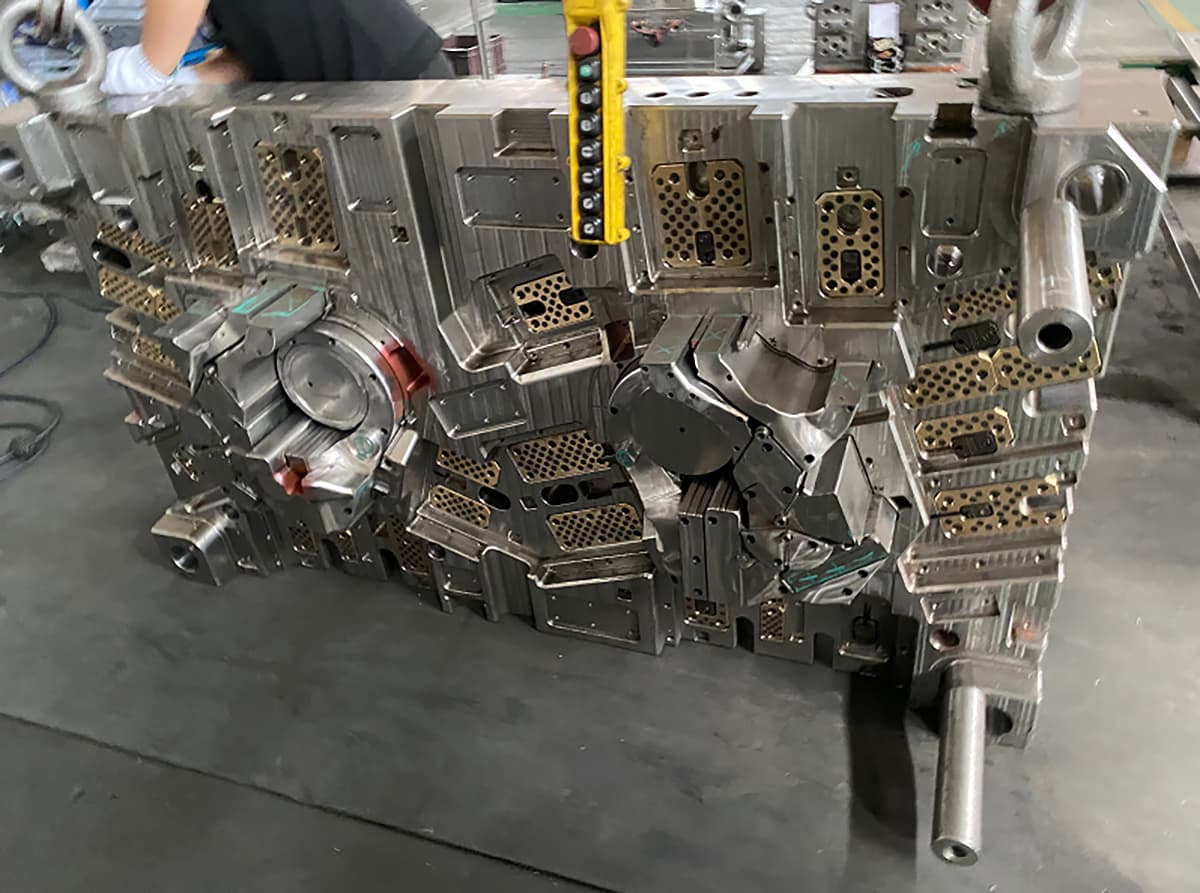
2.12 Correction method of die heat treatment deformation
Heat treatment deformation is a normal occurrence, and the key is to understand the deformation patterns and make efforts to correct them. The following methods can be used for correction:
1)The principle of martensitic transformation superplasticity can be utilized for timely correction. This can be done by quenching and cooling 4m mechanical blades and 1.5m long broaches to the appropriate temperature, and then gently applying pressure for correction. The same approach can be used for mold straightening.
2)Pressure tempering: This involves tempering that applies pressure to correct quenching distortion, such as for large and thin blades.
3)Cold treatment correction: For stainless steel parts that have a higher amount of retained austenite, cryogenic treatment at -70℃ for 1-2 hours can cause expansion in size. Cr12 steel die is the most suitable for this correction.
4)Hot spot correction: The most convex part of a bending piece can be quickly heated to about 700℃ using an oxyacetylene flame or high-frequency induction heating device, rapidly cooled, and then corrected.
5)High-frequency shrinkage cavity correction: The swollen workpiece can be heated to about 700℃ in an induction coil and rapidly cooled, creating a shrinkage cavity. If there are multiple shrinkage cavities, a stress relief treatment should be carried out.
6)Electroplating thickening correction method.
7)Chemical corrosion correction: This can be achieved through the use of a corrosive agent such as 40% HNO3+60% H2O or 20% HNO3+20% H2SO4. Parts that do not need to be corroded should be protected using asphalt or paraffin.
8)Rapid cooling shrinkage cavity correction: For workpieces with enlarged cavities, they can be annealed and heated to 700℃, then rapidly cooled 1-2 times for correction.
3. Conclusion
Science and technology are the primary driving forces in production. The 12 technical measures to extend the lifespan of molds, as discussed above, are both economical and practical.
By carefully studying the causes of mold failure, developing rectification plans, and implementing the appropriate technical measures, it is possible to create high-quality molds with a long lifespan.
